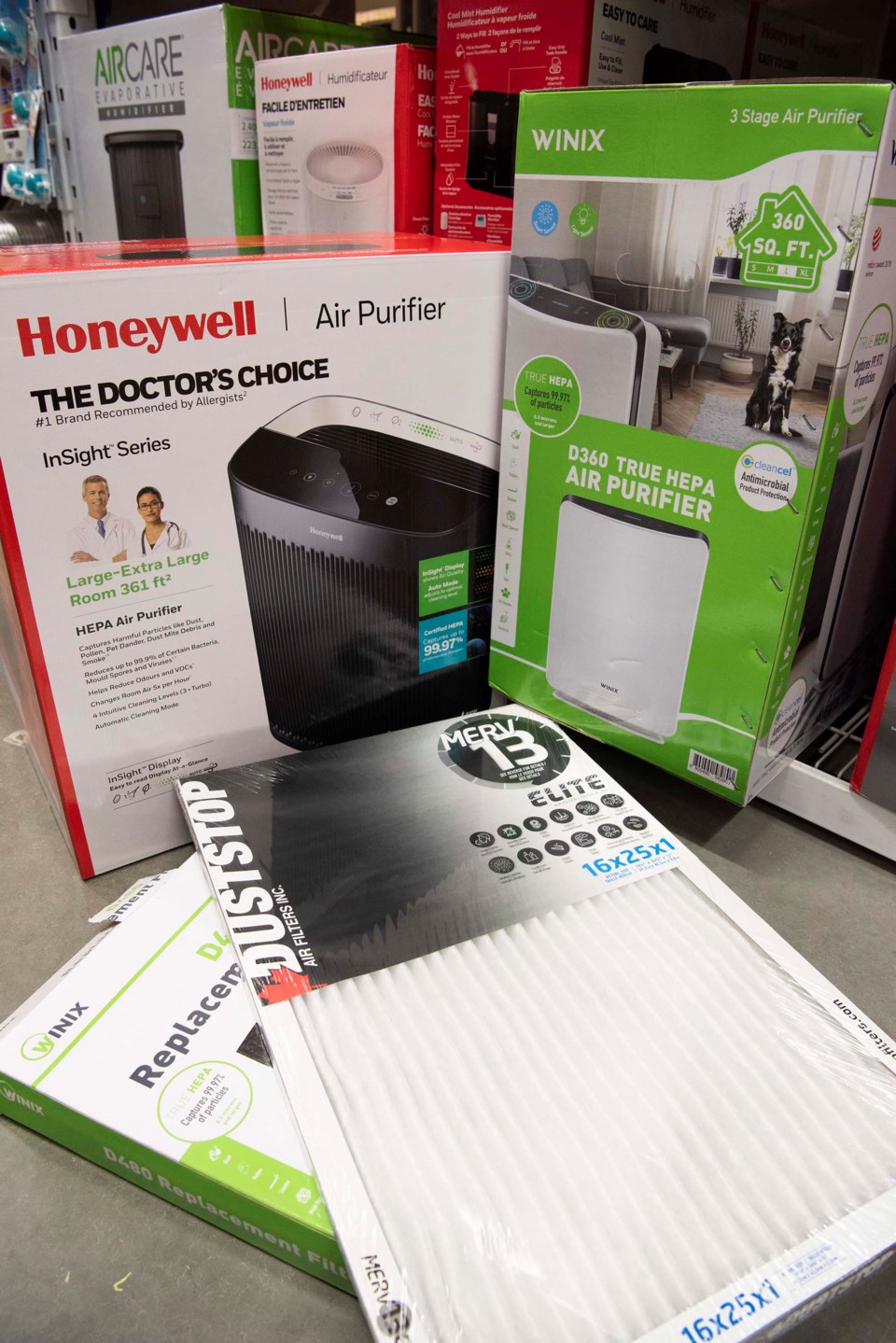St. Albert’s public and Catholic school boards say they don’t plan to follow Edmonton’s plans to buy portable filter systems to protect schools from COVID-19.
Edmonton Public Schools voted Feb. 1 to ask the province to let them spend $6 million of their reserves to buy portable HEPA filter systems for Edmonton classrooms.
The move follows public calls in Alberta for enhanced air filtration systems in schools to protect people from COVID-19. As of January, Alberta Health guidance documents say that schools should only consider portable HEPA filters in schools for COVID with the advice of professional ventilation experts.
Worth it, says EPS
Edmonton Public board chair Trisha Estabrooks said many families had asked the board to look at HEPA filters in schools. Engineers the board consulted said such units would provide students with another layer of protection against COVID.
“Air quality is the new water quality,” she said, as one parent put it to her, and these units could protect students against COVID and pollutants such as forest fire smoke.
“If we can do something that can improve overall air quality, pandemic or not, we’re willing to make that investment.”
Estabrooks said the board plans to put these units in about 5,000 school rooms and will likely use them post-pandemic. The units will arrive in about four weeks, assuming the province approves the use of the funds.
Estabrooks said this purchase is in line with the latest COVID recommendations from the American Society of Heating, Refrigerating and Air-Conditioning Engineers (ASHRAE), which recommends that buildings with central ventilation systems use filters with a Minimum Efficiency Reporting Value (MERV) of 13 or higher to clean their air. (ASHRAE reports that MERV 13 filters catch about 85 per cent of COVID-carrying particles. MERV 8 catch around 20 per cent, and HEPA filters catch about 99.97 per cent.)
Estabrooks said the board would have preferred the province fund these improvements as Ontario has done. Not all school boards can afford these filters, and dollars spent on them are dollars not available for education.
The board is also using MERV-13 filters in its schools where possible and running its HVAC systems more often for improved air circulation.
St. Albert: not needed
St. Albert Public board chair Kim Armstrong said her board discussed Edmonton Public’s decision on Feb. 2 and decided not to bring in portable HEPA units.
“The science hasn’t totally supported [HEPA] in terms of being a cost-effective measure,” she said.
Even if they did order the units, Armstrong said by the time they arrive it would be warm enough for classrooms to use cheaper ventilations improvements such as opened windows.
“We believe our schools are safe and we are doing everything possible to maintain that,” she said.
Cost is another factor. St. Albert Public secretary-treasurer Michael Brenneis said upgrading one school to HEPA filters would cost about $500,000, while outfitting 20 classrooms with portable filters would require $100,000.
Brenneis said St. Albert Public schools are instead using MERV 13 filters where possible (some are using MERV 8) and have cranked up their ventilation systems for more air changes.
Greater St. Albert Catholic doesn’t plan to use portable HEPA systems because it already has MERV-13 filters in all its schools, as recommended by ASHRAE, said chair Joe Becigneul.
“We’re confident the high-quality air filers will maintain the air quality in our schools.”
Sturgeon Public installed MERV 13 filters at Camilla and Four Winds Public schools over Christmas break, district spokesperson Karen Meurer said in an email. Other schools are having HEPA filters and virus-killing UVC lights retrofitted into classroom air ducts.
“Due to the age of our buildings it’s not a one-size-fits-all,” she explained.
Conseil scolaire Centre-Nord officials did not respond to questions by press deadline.
They should work, say experts
Amanda Hu heads up Fresh Air Schools Alberta — a Calgary non-profit working to improve classroom air quality during the pandemic. She said emerging research (such as a September 2021 preprint study of HEPA filters in a U.K. hospital) shows that portable HEPA units can clear COVID from their air and protect against the disease.
“I wouldn’t feel safe with my child being in a classroom if they didn’t have some way of removing viral particles,” she said in early January.
An October 2021 article from ASHRAE said portable HEPA filters are an effective way to prevent airborne COVID transmission and are easy to install. It recommended not having them blow directly at people and placing them in spaces where people will spend extended periods close together.
Ideally, schools should have a ventilation engineer examine their HVAC systems before installing HEPA filters, said Brian Fleck, a mechanical engineering professor at the University of Alberta who has studied airborne virus transmission. HEPA filters are great, but you can get similar results with lower-quality filters if you simply suck more air through them.
“We know COVID is an airborne virus,” he said in early January, and that HEPA filters can catch COVID-bearing particles.
Fleck said a portable HEPA system will improve air quality and catch COVID particles, and certainly will not make COVID exposure worse. Still, such a system would have to pull in a lot of air to make a big difference.
“Even putting a sock over a tube will stop some particles. It’s just a question of benefit versus effort.”




